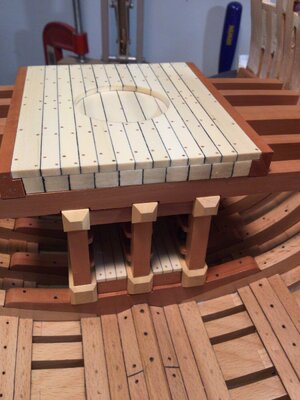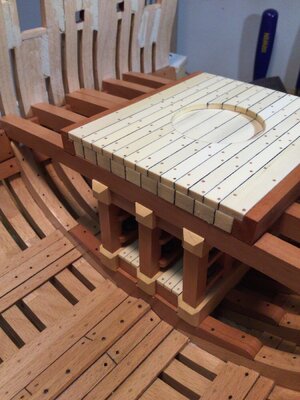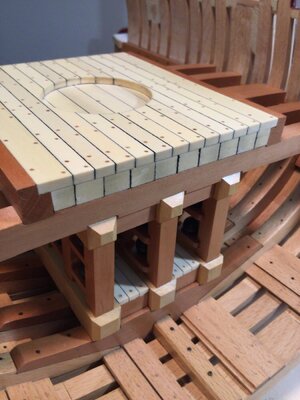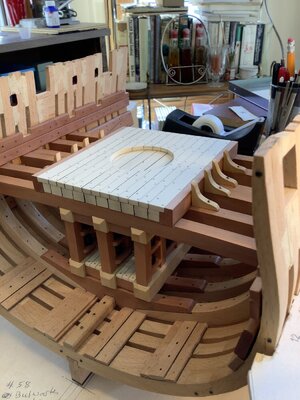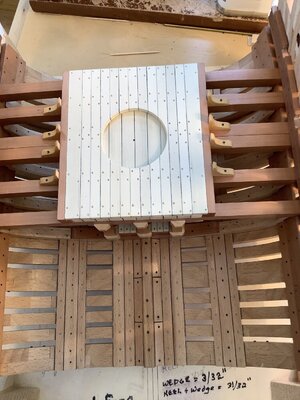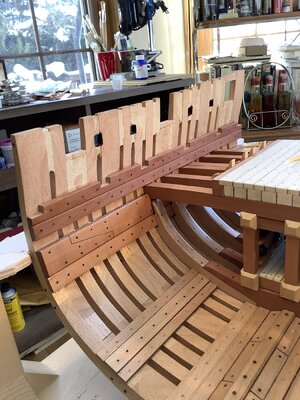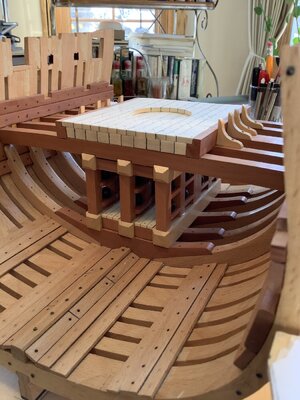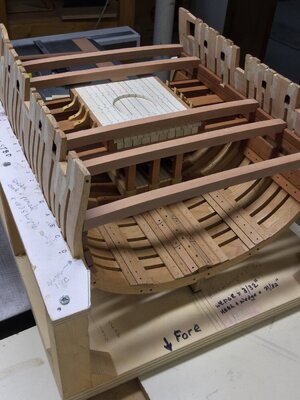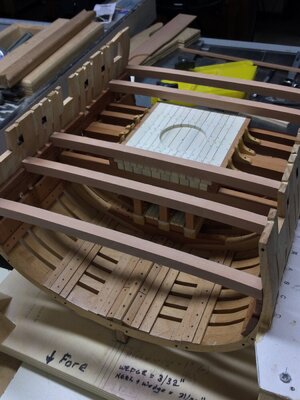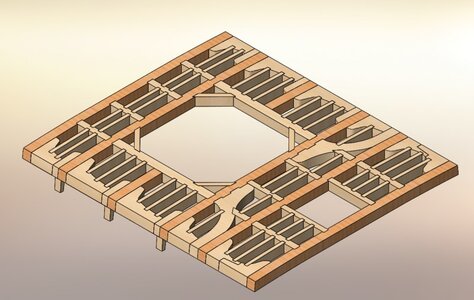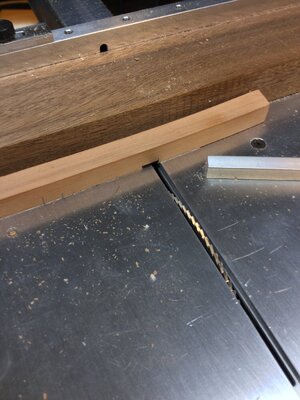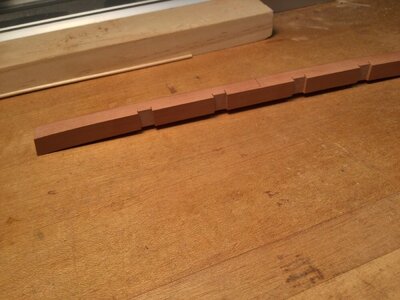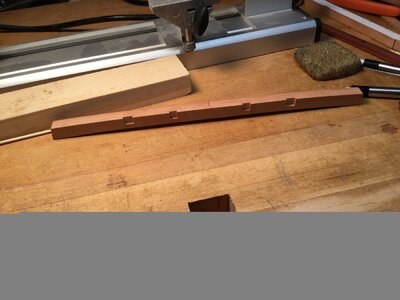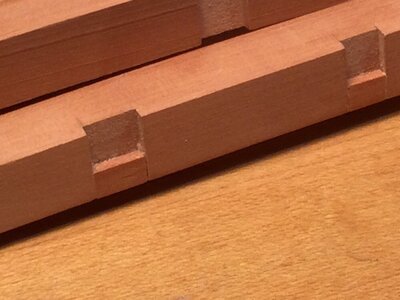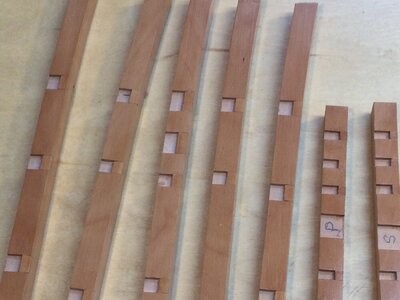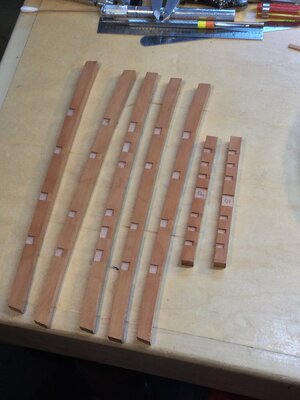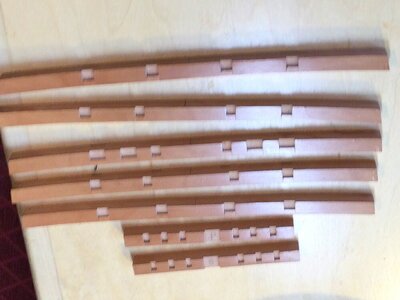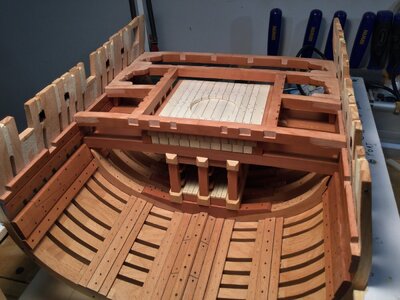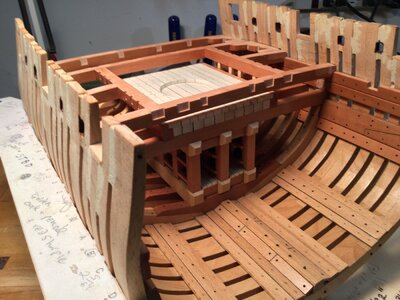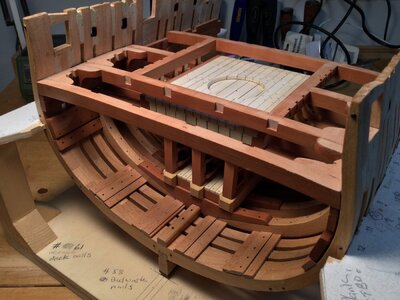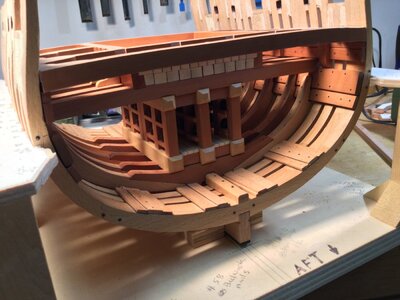Thanks, Rich!
The next step is to cut out the mortar pit beams. These support the pit deck itself, and in turn, rest on the upper support beams of the shell room. There are notches (really shallow dadoes) for both on each beam.
I milled up some 3/8" thick swiss pear and glued the beam templates to the wood with rubber cement. They were then cut out using the scroll saw. The mortar pit boundary timbers fit in the dadoes on the upper surface of each beam (red arrows). It's important that these line up exactly so I cut the beams a little long and snuck up on the final length using the disk sander. There should be no side-to-side play in the beams when fitted properly. Then I cut the dadoes on the under surfaces of the beams (green arrows) after marking each one individually so the fit on the upper support beams is precise. The beams have poly but are not yet glued in place.
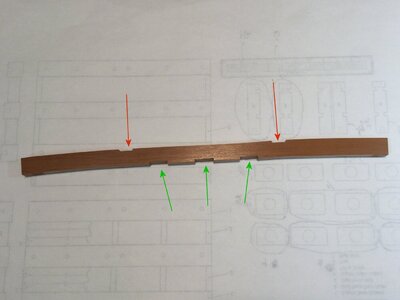

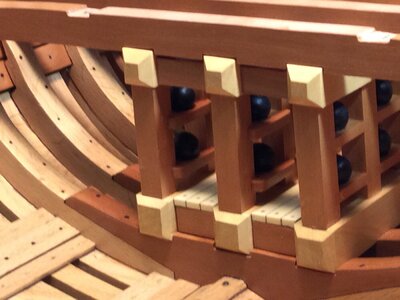
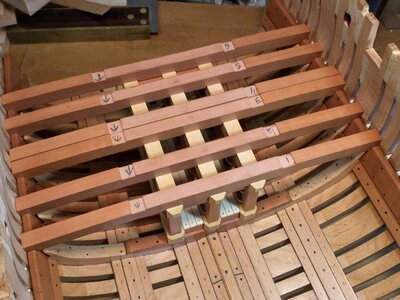
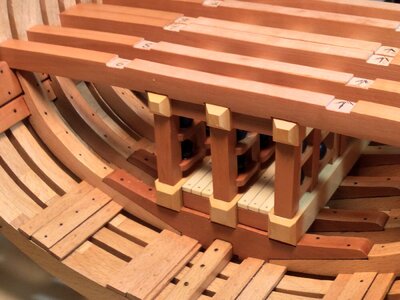
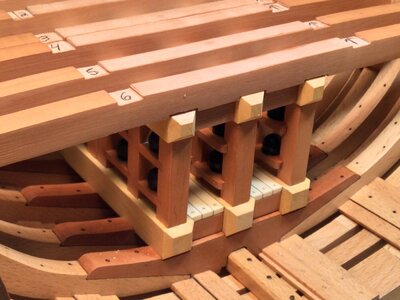
The next step is to cut out the mortar pit beams. These support the pit deck itself, and in turn, rest on the upper support beams of the shell room. There are notches (really shallow dadoes) for both on each beam.
I milled up some 3/8" thick swiss pear and glued the beam templates to the wood with rubber cement. They were then cut out using the scroll saw. The mortar pit boundary timbers fit in the dadoes on the upper surface of each beam (red arrows). It's important that these line up exactly so I cut the beams a little long and snuck up on the final length using the disk sander. There should be no side-to-side play in the beams when fitted properly. Then I cut the dadoes on the under surfaces of the beams (green arrows) after marking each one individually so the fit on the upper support beams is precise. The beams have poly but are not yet glued in place.










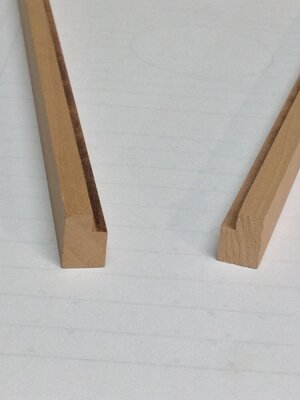
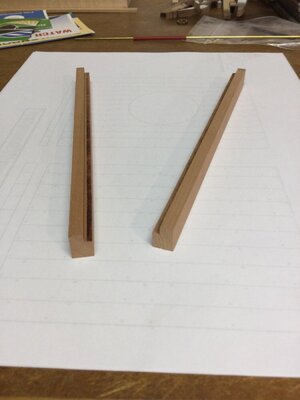
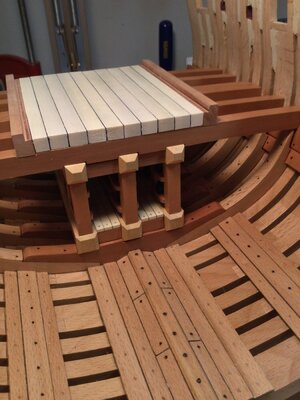
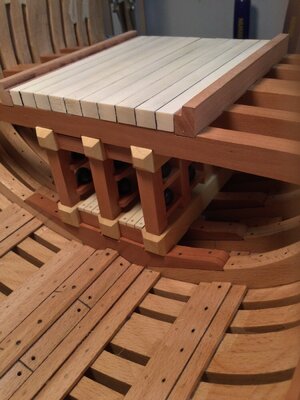
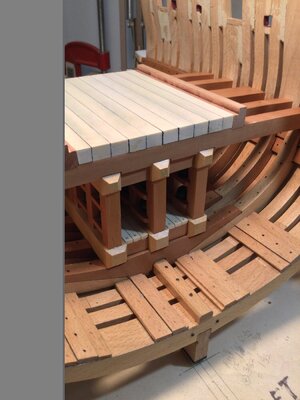
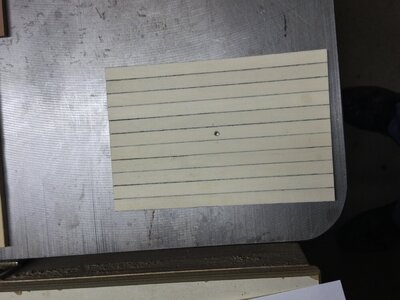
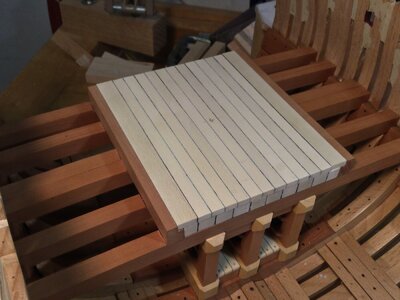
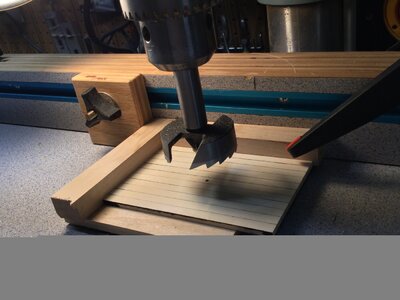
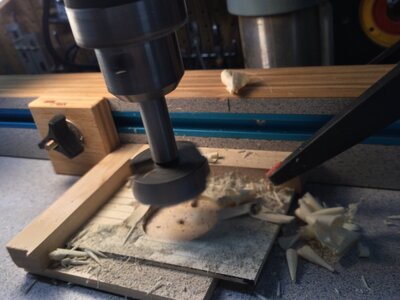
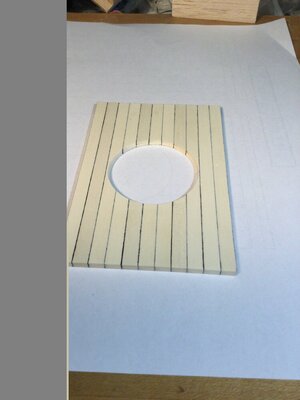
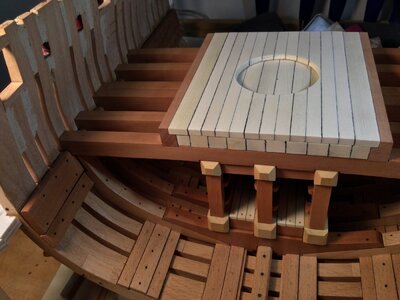
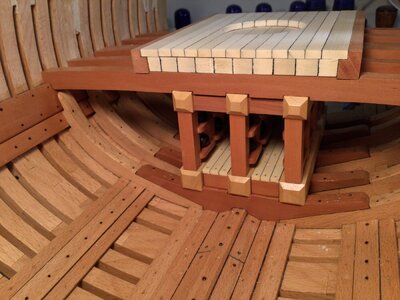
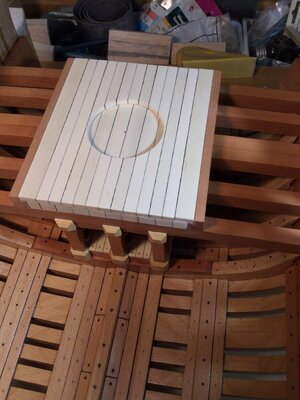
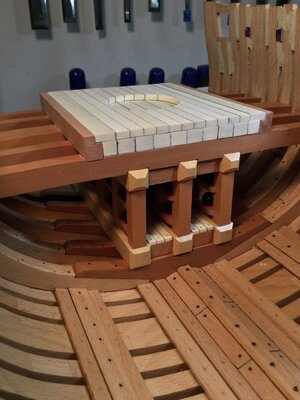
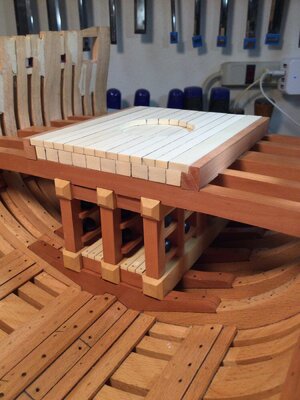
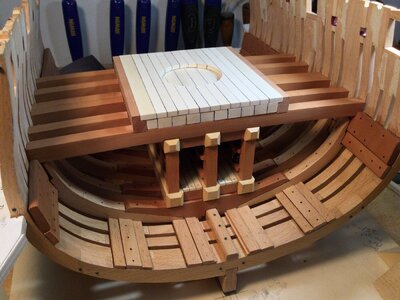


 I built the secondary mortar pit deck off the model by edge gluing the planking together. I then located where the center of the circular cutout would be and drilled a hole. I transferred this location to the primary deck by putting the deck back in place and marking the primary deck with a nail through the hole.
I built the secondary mortar pit deck off the model by edge gluing the planking together. I then located where the center of the circular cutout would be and drilled a hole. I transferred this location to the primary deck by putting the deck back in place and marking the primary deck with a nail through the hole.